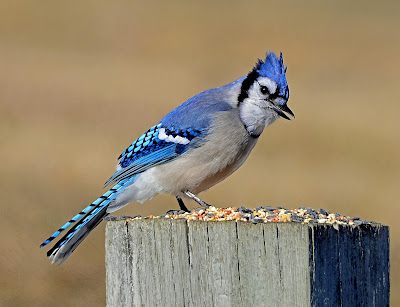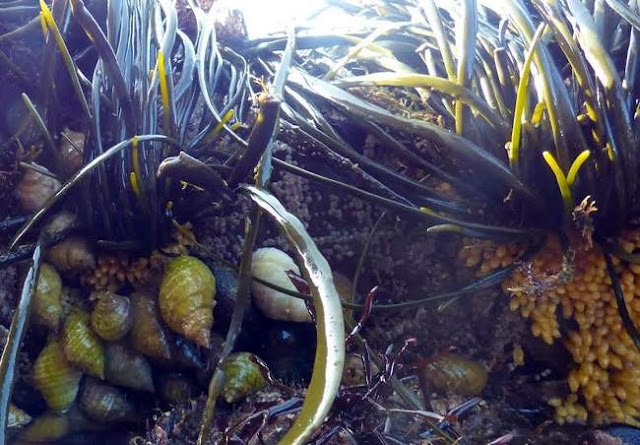- NATURE NEWS
The white oak is full of strength and beauty published August 24 2016 in The York Weekly/Portamsouth Herald, etc.
One of Aesops’ more famous fables, “The Oak and the Reed,” goes like this: "A very large
Oak was uprooted by the wind and thrown across a stream." It fell among some Reeds, which it thus addressed: "I wonder how you, who are so light and weak, are not entirely crushed by these strong winds." They replied, "You fight and contend with the wind, and consequently you are destroyed; while we on the contrary bend before the least breath of air, and therefore remain unbroken, and escape. The moral: stoop to conquer" (from Project Gutenberg, translation by George Fyler Townsend). As a kid I always liked the plucky little reed in this fable, you’re supposed to. I still like the reed but I love the uncompromising strength of an old oak tree. Those huge, ancient, cracked but not completely broken behemoths that inhabit our woods are wonderful to behold. They carry with them the allure of the olden days, perhaps because these big ones are from the olden days-oaks can live for centuries (4-500 years).
White oak leaves have rounded lobes, bark is light gray
We have a number of species of oak here in New England, the most common being the Northern red oak (one of the largest trees in the northeast) and the white oak. When most of us think of oak trees we are probably picturing a northern red oak - (Quercus rubra) the iconic oak tree. These stately trees are distinguished by the deep fissures (often red) in their bark and their bristle-tipped leaves. White oaks (Quercus alba) are just as stately but have lighter bark (hence the name “white,” even though the bark is more often a light gray rather than white) and the leaves have rounded tips.
I recently led a nature walk for the North Berwick Historical Society at a new nature preserve (the Keay Brook Preserve) in Berwick. At one point we stopped to consider a lovely old white oak. We got to talking about the respective value and uses of red versus white oak. Red oak is more valuable today for furniture and flooring due to its strength and its deep ruddy color, but back in colonial times white oak was the most valuable timber - it is strong, hard, heavy and very water resistant. I quoted Charles Fergus’ book “Trees of New England: a Natural History,” in which he writes “The nascent American navy built its famed heavy frigates, including the USS Constitution with white oak keels and planks. Yankee sailors dubbed the Constitution 'Old Ironsides' and boasted that her stout white oak hull turned aside British cannonballs during the War of 1812.” One of the history buffs in the group challenged this - she had heard that wood from the live oak, not the white oak, was used in the making of the USS Constitution. As someone with a somewhat tenuous grasp on American history I was worried that I had misquoted, luckily (since I hate being wrong) it turned out we were both right. A number of species of wood went into the construction of the Constitution. White oak went into the exterior hull and parts of the keel. Live oak, which, unlike the white oak, is short and gnarled was used in the skeleton (from “Wood that Went to War” Wood Magazine).
Back in colonial times, white oak wood was the choice wood for barrel making - wine and whiskey barrels in particular. The wood is water resistant due to woody cells called tyloses that plug the pores in the wood after it is harvested (red oak lacks these and is therefore not water tight).
One more human use-food! White oak acorns lack the high tannin content of red oak acorns and so were the choice of Native Americans and colonists who ground them up for a flour supplement (they are also on the menu for all nut-loving animals that inhabit our woods).
If I had to pick a favorite oak the white oak would probably be it because of the way they look in the late summer and fall when their trunks glow when struck with late afternoon light. I highly recommend getting out and looking for some, then standing back and admiring their uncompromising strength and their luminous beauty.
Moon snails' mysterious egg cases
by Sue Pike 8/19/2017 The York Weekly/Portsmouth Herald/Fosters Daily Democrat and more Of the many mysterious things you can find while beachcombing, one of the most difficult to understand is (I think) the egg collar of the moon snail. These beautifully-sculpted ribbons of sand show up on our beaches this time of year. A friend recently brought me one - it had washed up above the tide line, dried out and was starting to crumble. I knew it was a moon snail egg case but had to wonder how it was crafted; I certainly couldn’t have made such a thing. The story of how the female moon snail does this is spectacular - a nice example of the myriad of solutions nature has come up with to help with the task of reproduction. Moon snails are beautiful, round, moon-shaped snails (hence the name) that live just offshore of sandy beaches and on tidal sand and mudflats. They burrow in and through the sand in search of their prey. Pick up a clam or mussel shell, even a moon snail shell, if there...



Comments
Post a Comment